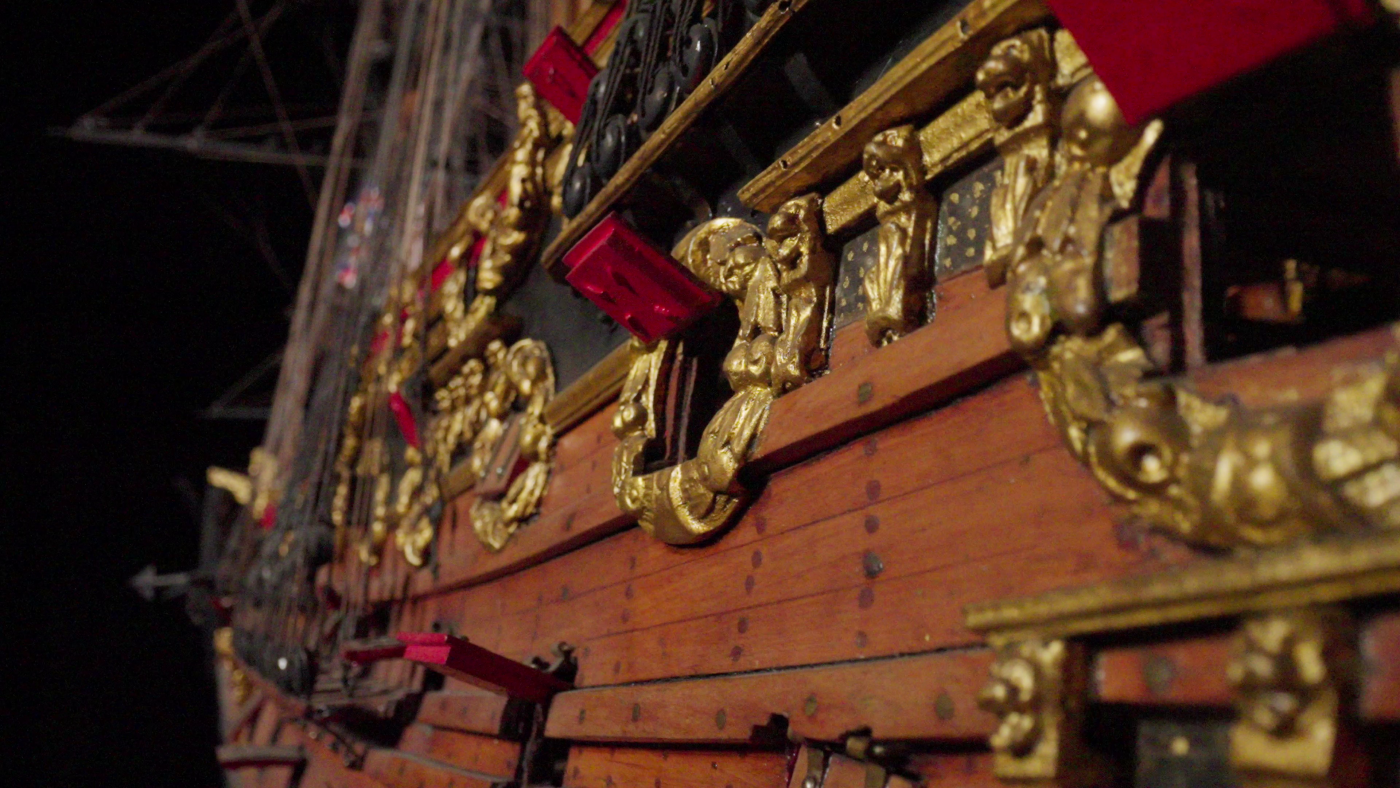Maritime Innovation In Miniature
HMS Prince
This is a model of HMS Prince of 1670, a three-decked 100-gun first-rate warship. Prince was one of the finest warships ever built and this contemporary model is one of the finest ever made.
She was ordered in 1667, during the reign of Charles II at a time of great turmoil. It was just one year after the great fire of London had destroyed much of the country’s capital, and two years after the great plague had killed 1/5 of the city’s population. The Dutch had subsequently sailed up the Medway and captured or burned three capital ships, ten ships of the line and towed away the magnificent Fleet Flagship that bore the King’s name: Royal Charles. It was the worst humiliation the Royal Navy has ever experienced. The English were furious, Charles II’s pride scalded, and the Navy dangerously weakened. HMS Prince was part of the response.
She was built at Chatham by Phineas Pett, the great-nephew of another Phineas Pett who had built ships for James I and Charles I. The hull alone – was a staggering 1448 tons burden and fully armed, rigged and stored, cost £57,409 – the equivalent of the yearly wages of 2000 shipwrights. She was astonishingly powerful. Her main battery could fire massive seven-inch diameter shot from 42lbr cannon– larger and more powerful guns than the main battery of Nelson’s HMS Victory, launched almost a century later.
Her guns weighed over 177 tons. This created stability problems and several times her hull was made wider by a process called ‘girdling’ in which extra timbers were fastened outside the hull to increase the ship’s beam. The model is made in the so-called Navy Board fashion in which the planking underwater and deck planking is left off to reveal the correctly spaced frames.

Her elaborate carvings are typical for such a prestigious ship. At the stern is Charles II’s coat of arms surrounded by cherubs and various other characters. The quarter gallery turrets on the model are painted dark grey to represent lead sheet coverings. The bowsprit is a man on horseback, surrounded by bare-breasted women, and situated just behind, is a little lion.
Her link with royalty goes further than just her name and carvings. In the battle of Solebay in 1672, she acted as the flagship for James Duke of York, the King’s brother and the future King James II of England.

The bowsprit is offset to starboard in order to miss the stem and foremast which were both situated on the centreline. The Prince was one of the last ships with this arrangement. Shortly after her launch, all ships would have their bowsprits on the centreline.
The capstan visible in the waist was used to haul heavy cables. Numerous sailors would push each bar. This is the old-style crab capstan with four long bars passing through the spindle at different heights making it awkward to use. Soon after her launch this began to be replaced by the large diameter drumhead capstan with 12 half-bars, all at the same convenient level.
The Prince had nine anchors weighing a total of more than 15 tons. They could not be made from cast iron like the guns as they would be too brittle, instead they were made from forged iron bars giving them greater strength. The model has three anchors, two on the port bow and one on the starboard.
The two forward anchors are the bower anchors, so-called because of their position near the bows. One is larger than the other; the largest anchor of them all, the sheet anchor, is just behind the small bower.
The rigging looks complicated but followed a standard pattern so that seamen would be familiar with the workings - no matter what ship they served in.
The model flies the flags of the Admiral of the Fleet - with the Royal Standard at the main, Union Jack at the jack staff, and red squadron colour at the ensign staff. The model also has a Vice Admiral of the Red’s flag at the foremast and a Rear Admiral of the Red’s flag at the mizzen.
The Prince had one of the longest careers in the Navy. She was rebuilt in 1719 and was affectionately known as ‘Old Billy’. She actually survived until 1813: 143 years after her launch. Her ancient timbers were by then so seasoned and well preserved it was said that they turned the strongest nails. Prince was one of the mightiest and strongest of ships in history – right to the very end.

